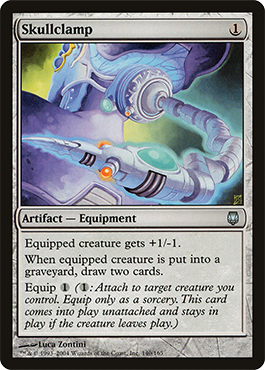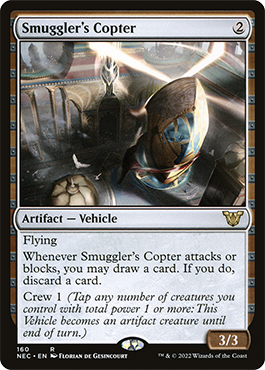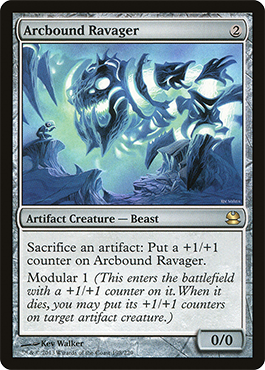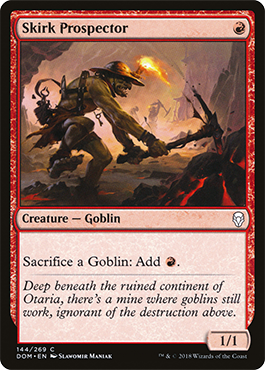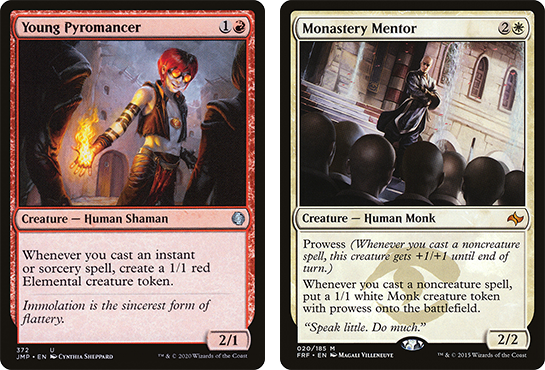Welcome to another edition of “On This Date in Magic History.” This week we’re going to take a look at the banning of Skullclamp in Mirrodin Block Constructed and Standard. Skullclamp is famously remembered as one of the most busted cards ever, and rightly so! It is an Equipment that was originally printed in 2004’s Darksteel. It is only one mana to play and one mana to Equip, and it gives the equipped creature +1/-1. However, what makes it super busted is the fact that you draw two cards when the equipped creature dies. In other words, you can pay one mana to put this on an X/1 and draw two cards. If you have a bunch of small creatures this can allow you to rip through your deck way too quickly.
In this article, we’ll talk about what led to Skullclamp getting printed, how people were using it before it got banned, and how the card is still used today.
How Did This Even Get Printed?
This is the kind of card where it is very difficult to understand how anyone thought this wasn’t way too powerful. One thing to keep in mind is that Equipment was very new when Darksteel came out. It made its debut in Mirrodin, which came only one set earlier. With that in mind, it becomes more understandable that this card saw print. Any time we see a new card type or subtype, things end up getting pretty pushed. A more recent example of this is Smuggler’s Copter. It was introduced in 2016’s Kaladesh, the set where vehicles made their debut. It quickly proved to be way too powerful for Standard and was quickly banned.
Companion is another more recent example of a new mechanic that got pushed a little bit too hard. They had to entirely errata the way that the mechanic worked to keep the Companions from breaking multiple Magic formats at once!
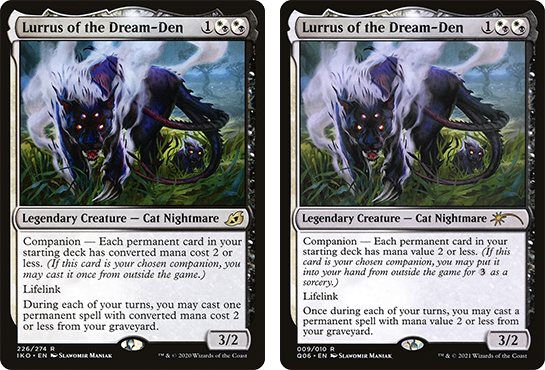
Right – Lurrus of the Dream-Den as printed in the Pioneer Challenger Decks 2021. It features the reworked Companion mechanic.
However, we can’t chalk it all up to Equipment being new. One really neat thing about Skullclamp is that we actually have a ton of detail about the card’s design. A few days after it got banned, Aaron Forsythe wrote an article titled “Skullclamp, We Hardly Knew Ye.” In it, he asks “How in the world did such a ridiculous card make it through R&D’s so-called rigorous development process?” In other words, even back in 2004 – when Equipment was brand new – it was hard to understand how this happened, and Aaron felt a responsibility to explain how exactly it went down. So, in the article, he takes us step-by-step through the card’s development.
I don’t want to rehash the entire article, since you can still read it today, but I do want to briefly discuss the design process of the card and where it went wrong. Skullclamp started out as something that wasn’t even close to broken. Originally, it was 3 to cast and 2 to equip and offered no stats boost. The only part of the card that was the same was that you would draw two cards when the creature died.
Then, late in development, a decision was made to push the Equipment in Darksteel, so Skullclamp became what we know it as today. Despite the fact that there was still a month of testing, no one really thought about testing out the new version of Skullclamp, which Aaron admits was a major oversight.
Before It Got Banned
R&D might have managed to overlook the card, but that wasn’t true of Magic players! Darksteel came out on February 6th of 2004, and at the first Block Constructed and Standard events following that set’s release, Skullclamp proved to be a problem.
Let’s take a look at Block Constructed first, where Skullclamp found success at Pro Tour Kobe (February 27th-29th, 2004). Skullclamp would have been great in any Block Constructed format, but it was absolutely absurd in this one! The format was really defined by the Affinity deck, which featured a powerful sacrifice engine in the form of Arcbound Ravager. Combining the Ravager’s ability to sacrifice artifacts with the clamp resulted not only in a massive Ravager, but in a fist full of cards for the Affinity player. Unsurprisingly, Affinity decks featuring Skullclamp dominated the event.
The next big Standard event was Grand Prix Brussels (May 28-30th, 2004). Affinity decks were a force at this event too, but they were also joined by Goblins – another deck that featured lots of small creatures and sacrifice effects. It was particularly nasty to combine it with Skirk Prospector, since you could just keep cycling through Goblins and drawing more cards, while using the Prospector’s sacrifice effect to produce mana to equip it to another Goblin. That’s just one of many ways the card could be abused in Standard Goblin decks.
Skullclamp Gets Banned
By this point, Wizards of the Coast had seen enough. Just a few days after the conclusion of Grand Prix Brussels, Skullclamp was banned in both Mirrodin Block Constructed and Standard. That wasn’t the end of it, though! Skullclamp quickly proved to be too powerful for other formats too. In September of 2004 it got banned in both Extended and Legacy, and when Modern was created as a format in 2011, it was on the preliminary ban list. It is still banned in all of those formats. In other words, when it comes to formats with premiere-level events, it is only legal in the most powerful one of them all – Vintage.
Skullclamp Today
Unsurprisingly, the clamp does see play in Vintage. It has been especially nasty in decks that use Young Pyromancer and/or Monastery Mentor, since those decks generate tokens quite easily. You can put the Equipment on those tokens to draw more cards, which probably means you’re drawing more spells you can play to make more tokens, and so on. Monastery Mentor did get restricted in Vintage back in 2017, and Skullclamp hasn’t been quite as prolific since then.
Skullclamp also sees plenty of play in EDH, where it sees play in just about any creature-heavy deck. The card is powerful enough that some playgroups have banned the card entirely, but it is still played in the format with regularity.
Parting Words
Skullclamp’s time was short-lived in most formats, but its legacy has certainly lived on! It is often thought of as one of R&D’s biggest mistakes ever, and one of the most broken cards ever printed. I think there’s an argument to be made that it might be R&D’s biggest mistake ever. While cards like Smuggler’s Copter, Memory Jar, and Companions were definitely a problem, I think Skullclamp was the most obviously busted of the bunch. Especially in a metagame featuring a bunch of cards that let you sacrifice things for value already!
Thanks for reading! I’ll be back next week with a look at another important event in Magic history!

Jacob has been playing Magic for the better part of 24 years, and he especially loves playing Magic’s Limited formats. He also holds a PhD in history from the University of Oklahoma. In 2015, he started his YouTube channel, “Nizzahon Magic,” where he combines his interests with many videos covering Magic’s competitive history. When he’s not playing Magic or making Magic content, he can be found teaching college-level history courses or caring for a menagerie of pets with his wife.


